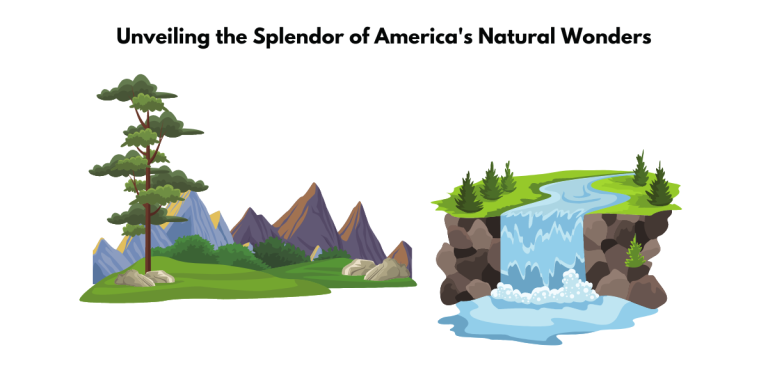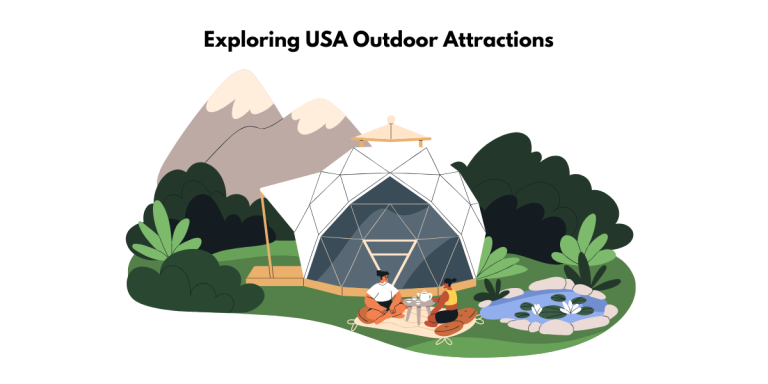National Forest vs Park: Which One to Visit Next? (Comparison Guide)
Brief Overview: National Parks vs. National Forests
At first glance, National Forests and National Parks may seem worlds apart yet the same, but take a closer look and you’ll discover distinct differences. The primary distinction lies not just in their visual appeal, but in their management and intended purposes. For example, striking locations like Rainier National Park or the awe-inspiring Grand Canyon, are managed by National Park Service Rangers, while lesser-known yet significant places like Targhee National Forest in Idaho are managed by the US Forest Service.
The subtle differences even extend to the iconic flat-brimmed hats issued to National Park Rangers but not to US Forest Service Rangers. Besides, the vast array of national park sites, which include National Parks, National Rivers, National Recreation Sites, and National Battlefields, offer incredible options for Americans seeking outdoor experiences. These range from the stark beauty of the Badlands to the tranquility of lakeshores and the vibrancy of national memorials.
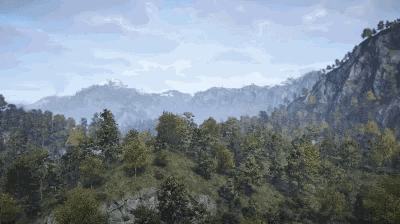
What is a National Park?
A National Park is a federally protected area known for its natural beauty and significant geological features. Such as the breathtaking features found in Rainier National Park, which are diligently protected by the National Park Service Rangers. Managed by the National Park Service since 1916, these parks are intended to preserve the integrity of unique resource types which include geological marvels like the Grand Canyon. This objective translates to strict rules meant to protect the wildlife, plant life, and geological features within these parks.
From the awe-inspiring geysers of the first-ever National Park, Yellowstone, located in Idaho, Wyoming, and Montana, to the majestic towering trees of Sequoia & Kings Canyon in Fresno County, National Parks provide excellent opportunities for public recreation and scientific study. Notably, the creation of a National Park is an honor bestowed by the U.S. Congress.
National Parks in Southern California include the Channel Islands in Ventura, Joshua Tree in Southern California, and the Pinnacles in Paicines, among others. Additionally, remarkable parks like Zion and the Badlands fall under this category. Each of these parks embodies the National Park Service’s mission by offering superlative examples of our nation’s natural heritage – including national memorials – combined with opportunities for public enjoyment.
What is a National Forest?
A National Forest, on the other hand, is a designation for public lands managed by the United States Forest Service, a sector of the United States Department of Agriculture. Unlike National Parks, National Forests are designed with multiple uses in mind, including timber harvesting, recreational activities, wildlife preservation, and grazing.
The primary objective of National Forests is to maintain the health, diversity, and overall productivity of the nation’s forests and grasslands to meet the needs of the present and future generations. Consequently, the use rules tend to be lighter compared to National Parks, offering a multi-spectrum utility to the public.
As of date, there are 154 National Forests in the United States, covering a considerable surface of nearly 188 million acres. An excellent example of a National Forest is the Angeles National Forest, which stretches over the San Gabriel Mountains and acts as a green buffer zone for the metropolis of Los Angeles.
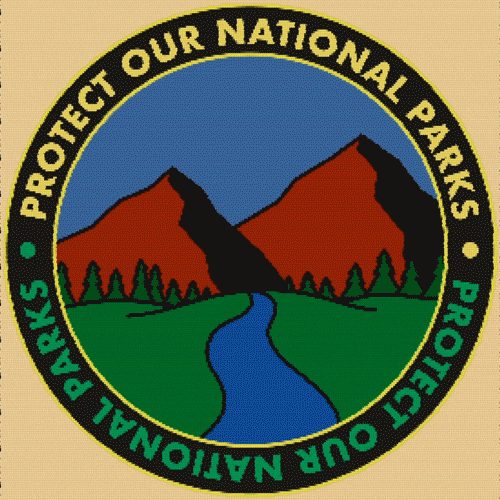
Key Differences Highlighted
Size: National Forests vs National Parks
The size difference between National Forests and National Parks is quite significant. According to the National Park Service and the United States Forest Service, there are about 84 million acres of National Parks and around 193 million acres of National Forests in the United States.
While there are fewer National Parks, these designated areas are revered for their spectacular significance. The largest National Park is Alaska’s Wrangell–St. Elias National Park and Preserve, which spans over 13.2 million acres.
Conversely, National Forests cover a much larger area and are designed for multiple uses, from logging and mineral extraction to recreation and conservation. The largest National Forest is Tongass in Alaska, covering approximately 17 million acres.
It’s interesting to note that, despite the larger land coverage of National Forests, National Parks often garner more attention due to their iconic landmarks and pristine natural beauty. However, both play a crucial role in preserving the diverse ecosystems across the country.
Management Styles: National Forest vs National Park
The contrasting management styles of National Forests versus National Parks are the heartbeat of their key differences. National Parks are effectively managed under the principle of preservation. This means that the governing body, the National Park Service, aims to keep the parks as close to their original, untampered condition as possible. Thus, activities that could potentially disrupt or degrade the environment, such as logging, are strictly prohibited.
Contrarily, National Forests follow the multiple-use management model, under the administration of the U.S. Forest Service. This model advocates for the utilization of forests for various purposes simultaneously, embracing a balance between resource extraction (such as timber harvesting and mining), recreation, conservation, and livestock grazing. This more flexible management style is designed to “provide the greatest amount of good for the greatest amount of people in the long run,” according to Gifford Pinchot, the first Chief Forester of the US Forest Service.
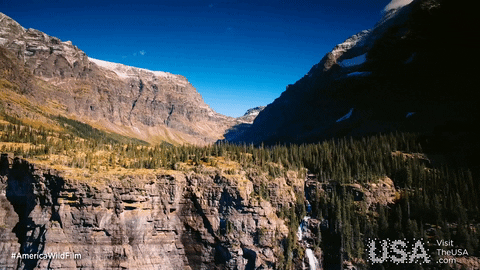
Knowledge Nuggets: Fun Facts & Misconceptions
America the Beautiful National Park Pass
The America the Beautiful Pass is an $80 annual pass providing free admission into over 2,000 National Park Service sites for the cardholder and three guests. It provides unlimited entry to all 63 national parks, as well as to national monuments, national recreation areas, national historic parks, national wildlife refuges, and more for one year.
For frequent visitors to these sites, the pass can deliver considerable savings. For instance, most National Parks charge a $30 or $35 admission fee, so the pass quickly pays for itself after a few visits. Moreover, it offers discounts on campsites and recreation areas in national forests, as well as those operated by the Bureau of Land Management, the US Army Corps of Engineers, the US Fish and Wildlife Service, and the Bureau of Reclamation.
The pass can be purchased at any National Park Site or online from the United States Geological Survey (USGS) website.
The National Forests Under the Department of the Interior? Once upon a time…
Yes, it’s hard to believe but true! There was a time when National Forests were managed by the Department of the Interior. The stewardship of these public lands shifted to the Department of Agriculture in 1905, following a reorganization of federally managed public lands under President Theodore Roosevelt’s administration and the development of the US Forest Service.
Gifford Pinchot, a pioneer of American forestry and conservation, was the agency’s first Chief Forester. His philosophy of “the greatest good for the greatest number over the longest time” guided the young agency and later became the foundation of modern forestry.
This realignment was part of a progressive-era push to improve the management of our prized natural resources. In fact, the story of the National Forests kicked off in 1876 when Congress established the office of Special Agent in the Department of Agriculture, aiming at assessing the quality and conditions of forests nationwide. The journey culminated in 1891, with the Forest Reserve Act, allowing the President to designate “forest reserves,” now recognized as National Forests.
So, while the national parks and forests originate from the Department of the Interior, they are managed by different departments today, each offering a unique approach towards conservation and public use.
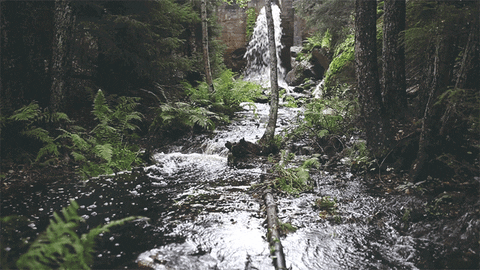
Other Types of Public Lands to Know About
National Monuments
National Monuments, like National Parks and Forests, serve as critical guardians of America’s natural, cultural, or historic treasures. These sites can encompass a variety of environments, ranging from historical structures to unique geological formations and vast landscapes teeming with biodiversity.
Since 1906, 120 National Monuments have been created. Unlike National Parks, which require congressional approval, National Monuments can be designated by the Presidents of the United States under the Antiquities Act of 1906. Despite their diverse features, all National Monuments share a common objective – to protect the very best of what the United States has to offer for future generations to appreciate and enjoy.
Some National Monuments, such as the iconic Devils Tower in Wyoming or the multi-colored geological amphitheater of Cedar Breaks in Utah, are cherished for their spectacular natural attributes. Others, like Illinois’s Pullman National Monument, hold cultural or historical significance.
The management of these monuments can be spearheaded by any one of seven federal agencies, including the National Park Service, or in partnership between agencies.
National Wildlife Refuges
Often touted as America’s best-kept secret, National Wildlife Refuges form a network of lands and water designated to conserve America’s fish, wildlife, and plants. Managed by the U.S. Fish and Wildlife Service, this public land system is arguably the most comprehensive in the world, dedicated primarily to safeguarding wildlife and their habitat.
Created in 1903 when President Theodore Roosevelt established Pelican Island National Wildlife Refuge, this Refuge System has grown to more than 560 sites spanning every state and U.S. territory. These refuges are within an hour’s drive of most major cities, offering urbanites and nature enthusiasts an opportunity to connect with nature.
While conservation of wildlife populations and habitats is a vital commitment, over 500 of these refuges also offer a wealth of recreational activities. From hiking trails, canoeing, and kayaking, to wildlife viewing, fishing, and hunting, these treasures are visited by more than 47 million people each year!
An example is the Back Bay National Wildlife Refuge located on the southern coast of Virginia. This refuge provides feeding and resting habitat for migratory birds and contains over 9,250 acres, offering a splendid view of the typical barrier islands found along the Atlantic and Gulf coasts.
National Conservation Areas
National Conservation Areas (NCAs) are public lands that are earmarked for the benefit and pleasure of present and future generations. These lands, managed by the Bureau of Land Management, mirror national parks in that they are appointed by Congress and contain scientific, cultural, historical, and recreational resources. Iconic locations like California’s Lost Coast, King Range National Conservation Area, and Utah’s Red Cliffs National Conservation Area fall under this category.
National Conservation Areas are just a segment of the National Conservation Lands, a network of public lands with the nation’s most astounding landscapes. These lands encompass 873 federally recognized sites, spreading over approximately 32 million acres, predominantly across 12 western states. Besides National Conservation Areas, this system also includes national monuments, wild and scenic rivers, wildernesses, and national scenic and historic trails.
Take for instance the King Range National Conservation Area which covers 68,000 acres along 35 miles of California’s stunning coastline. Established by Congress in 1970, it became the first location within the Bureau of Land Management’s National Conservation Lands. These NCAs are living proof of the nation’s dedication to preserving its natural splendor.

FAQs on National Parks and Forests
Who’s in charge of the national parks?
National Parks are managed by the National Park Service, which falls under the US Department of the Interior. The individual in charge of a specific National Park is known as the National Park Superintendent. For instance, the Yosemite National Park in California is overseen by a superintendent assigned specifically to this park. Some national parks, like the Sequoia and Kings Canyon National Parks, are managed collectively under a single superintendent.
The ultimate boss of the National Park Service is its Director, who oversees all the National Parks and other sites managed by the service, such as national monuments. The Director is appointed by the Secretary of the Interior, who reports directly to the President of the United States. Whit Fosburgh, a strategic administration veteran is helming the operation as the National Park Service Director as of November 2021.
Park Rangers, distinguishable by their iconic flat-brimmed hats, also play a vital role. They work tirelessly to maintain the parks, lead activities, offer interpretive services, and often act as first responders in emergencies.
Who’s in charge of the national forests?
The management of National Forests is under the jurisdiction of the US Forest Service, a part of the US Department of Agriculture. The individual who takes charge of a particular National Forest is named the Forest Supervisor. Each Forest Supervisor reports to a Regional Forester who supervises all national forests in a specified region. As of now, there are nine regions in total.
The head boss of all Regional Foresters is the Chief Forester, who manages the entire US Forest Service. Following the chain of command, the Chief Forester reports to the Secretary of Agriculture, who heads the Department of Agriculture. Given that the Secretary of Agriculture is a cabinet-level position, they ultimately report to the President of the United States.
Interestingly, unlike rangers stationed at National Parks, Forest Rangers in National Forests aren’t required to wear a formal hat when outdoors. Instead, they often don a ball cap embellished with the agency’s signature yellow and green logo, reflecting a more relaxed management style in tune with the multiple-use policy of National Forests.
Why are National Parks more restricted than National Forests?
The difference in restrictions between National Parks and National Forests boils down to their respective management objectives. When the National Park System was established by the US Congress in 1916, its mission was clear: “to conserve the scenery and the natural and historic objects and the wildlife therein and to provide for the enjoyment of the same in such manner and by such means as will leave them unimpaired for the enjoyment of future generations.”
On the other hand, the US Forest Service, which was commissioned in 1905, operates under a “multiple-use, sustained yield” principle. This concept allows for a balanced, overlapping, or sequential use, aiming to provide a steady supply of resources on a long-term basis while maintaining overall land health.
Consequently, National Parks have strict regulations to safeguard their unique ecosystems, such as restrictions on hunting, campfires, off-road driving, and pet access. National Forests, by contrast, allow a broader range of activities, including hunting, logging, and grazing, all while keeping a keen eye on the sustainability of the forest ecosystem.
The rules in place for each category reflect their different, yet equally essential, roles in conserving our nation’s rich natural resources.
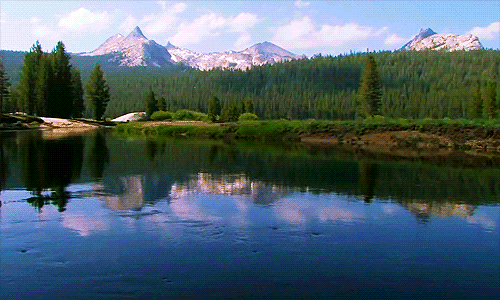
How can I effectively explore US Public Land?
There are a few key steps to effectively explore US public land, most of which come down to good preparation and respectful behavior:
- Research the region: Before visiting any public land, familiarize yourself with the type of site you’re planning to visit. Is it a national forest, park, or wildlife refuge? Each has its own set of rules and offerings.
- Know the rules: Check out the specific regulations for the site you’re visiting. This will help you understand what you’re allowed to do, whether it be hiking, camping, wildlife viewing, hunting, or something else.
- Take the right gear: Depending on your activities, ensure you bring along appropriate gear. This could include walking shoes for hiking, binoculars for bird watching, or a tent for camping.
- Carry necessary passes: If you frequently visit US public lands, consider obtaining the America the Beautiful Pass. This $80 per year pass provides free entry to federally operated recreation sites across the country.
- Leave No Trace: Practice the seven principles of Leave No Trace: Plan ahead and prepare, travel and camp on durable surfaces, dispose of waste properly, leave what you find, minimize campfire impact, respect wildlife, and be considerate of other visitors.
- Respect for the Land: Always remember that public land is a shared resource. Literal footsteps could have a significant impact on the ecosystems that make these places so special.
Exploring US public lands can be a rewarding experience if you take the time to familiarize yourself with the rules, understand the environment, and respect the majesty of these precious spaces.
- National Forest vs Park: Which One to Visit Next? (Comparison Guide) - January 9, 2024
- RV Types: What are the Different Types of RV and Which is the Best for You? - January 2, 2024


